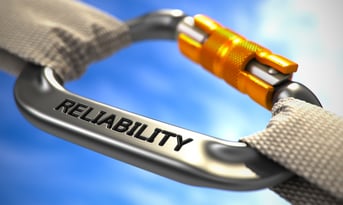
Introduction
Behind the scenes of every successful manufacturer, there lies a crucial decision-making process that often goes unnoticed — the selection of long-term customers, or partners. Just like finding the perfect talent, supplier, or machine tool, manufacturers must carefully choose customers who align with their values, capabilities, and long-term goals.
At C&M Precision Tech, like many others, we started with one core customer, and then we grew by adding new customers, sometimes not being very picky. We needed the jobs to survive. Now, almost 50 years later, we find ourselves in the position of being able to “no quote” when the conversation or the potential is limited to a transactional supplier relationship with “lower piece-part price” at the center and little consideration of what we could do to grow together.
In this blog post, we will explore the factors that drive customer selection in the manufacturing sector and why it matters for both suppliers and their customers.
1. Understand Your Niche
 When it comes to choosing long-term partners, manufacturers need to have a clear understanding of their niche. This means identifying the industries they specialize in and the types of projects at which they excel. By focusing on a specific niche, manufacturers can build expertise, optimize processes, and enhance customer satisfaction.
When it comes to choosing long-term partners, manufacturers need to have a clear understanding of their niche. This means identifying the industries they specialize in and the types of projects at which they excel. By focusing on a specific niche, manufacturers can build expertise, optimize processes, and enhance customer satisfaction.
For example, a manufacturer that specializes in aerospace components will prioritize customers from that industry because that particular manufacturer will have a better understanding of aerospace customers' needs and can deliver superior results.
In our case, we identified seven core end-markets, and most importantly, specific characteristics of the customers that we would like to work with. Those criteria are: 1) Leaders in their respective industries; 2) Mid- to high-volume precision components; and 3) Opportunities to move up the value chain with assemblies. This “test” allows us to qualify, or disqualify, prospective customers relatively quickly.
2. Shared Values and Compatibility
 Long-term partnerships thrive on shared values and compatibility. When selecting customers, manufacturers should look for alignment in terms of work ethic, communication style, and business philosophy. This screening process helps to ensure a smooth collaboration in which both parties can understand and meet each other's expectations.
Long-term partnerships thrive on shared values and compatibility. When selecting customers, manufacturers should look for alignment in terms of work ethic, communication style, and business philosophy. This screening process helps to ensure a smooth collaboration in which both parties can understand and meet each other's expectations.
For instance, if a manufacturer values transparency and open communication, they will seek customers who appreciate and reciprocate these values, leading to stronger and more productive partnerships.
In our case, we have a strong vision and mission. We also identified five core values that can be included in straightforward qualification questions to further screen prospects to those with whom a “match” is likely. Just as customers evaluate supplier performance based on quality and delivery, we do it in reverse around these values.
.png?width=483&height=476&name=21413---C%26M-5th-C-in-value-chart-APR-V1%20(1).png)
3. Capacity and Resources
 Manufacturers have limited resources, whether it's equipment, labor, or time. As a result, they must consider the capacity and resources required to serve a potential long-term customer. Assessing the compatibility of project scope, volume, and timeline relative to their existing capabilities is crucial to ensure successful delivery. By choosing customers who align with their capacity, manufacturers can avoid overburdening their resources and maintain high levels of quality and efficiency.
Manufacturers have limited resources, whether it's equipment, labor, or time. As a result, they must consider the capacity and resources required to serve a potential long-term customer. Assessing the compatibility of project scope, volume, and timeline relative to their existing capabilities is crucial to ensure successful delivery. By choosing customers who align with their capacity, manufacturers can avoid overburdening their resources and maintain high levels of quality and efficiency.
In our shop, for example, we thrive on stable and predictable runs. We tend to prioritize those orders over low-volume “one-offs.” It’s a delicate balance as some of those jobs can lead to profitable longer runs, so we tend to work with existing long-term partners first to develop and prototype their next product. That’s part of our DNA to grow together.
4. Reliability and Financial Stability
 Choosing customers with a proven track record of reliability and financial stability is essential for manufacturers. They seek customers who honor their commitments, pay invoices on time, and have a solid foundation. Those characteristics help to mitigate risks associated with late payments, financial instability, or unexpected project cancellations. Long-term partnerships built on trust and reliability foster a mutually beneficial relationship where both parties can grow and succeed together.
Choosing customers with a proven track record of reliability and financial stability is essential for manufacturers. They seek customers who honor their commitments, pay invoices on time, and have a solid foundation. Those characteristics help to mitigate risks associated with late payments, financial instability, or unexpected project cancellations. Long-term partnerships built on trust and reliability foster a mutually beneficial relationship where both parties can grow and succeed together.
For us, a customer’s creditworthiness is one of the most revealing factors. We chose industries and types of work that lend themselves to extended payment terms, including the investments we need to make to purchase equipment, hire and train talent, develop processes, create the first article, and go through the customer’s certification program. When added up, it’s a strain on our cash flow and needs to be discussed and shared fairly. That’s where we determine whether we are in a partnership or in a typical transactional relationship.
5. Potential for Collaboration and Growth
 Manufacturers are continually looking for opportunities to expand their capabilities and diversify their customer base. That is why they should consider the potential for collaboration and growth when selecting long-term partners. Customers who are open to exploring new ideas, engaging in continuous improvement, and supporting innovation are highly valued. Such partnerships allow manufacturers to expand their expertise, explore new markets, and stay competitive in an ever-evolving manufacturing landscape.
Manufacturers are continually looking for opportunities to expand their capabilities and diversify their customer base. That is why they should consider the potential for collaboration and growth when selecting long-term partners. Customers who are open to exploring new ideas, engaging in continuous improvement, and supporting innovation are highly valued. Such partnerships allow manufacturers to expand their expertise, explore new markets, and stay competitive in an ever-evolving manufacturing landscape.
At C&M Precision Tech, following the five steps of the partner selection process described is how we got where we are. For example, when a customer spent too much on outside services to finish a part that we were making for them, we jointly decided to invest in our own EDM machines and clean room. We saved the customer over 50% on the total cost of the part, now partner regularly with that customer, and have added EDM to our portfolio of capabilities.
More recently, we accepted a challenge to machine a part made of highly exotic alloys. It took us a year to get the material and the new mill-turn capabilities we needed. Without a strong customer partnership, the addition of this capability would have been too big a risk for us to assume on a speculative basis.
Conclusion
Choosing the right long-term customers with whom to partner is a critical decision for manufacturers. By identifying their niche, seeking compatibility, considering capacity and resources, valuing reliability, and exploring growth opportunities, manufacturers can establish mutually beneficial relationships with their customers.
These partnerships create a win-win situation, where both parties thrive, grow together, and participate in advancing U.S. manufacturing, one part at a time (our vision).
Tell Us About Your Application
To share your thoughts about this approach to generating business opportunities…
